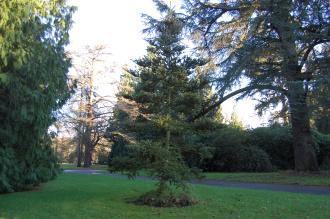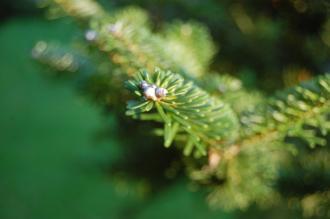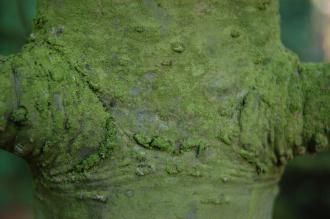
Abies koreana (30/12/2013, Kew Gardens, London)
Position: Full sun
Flowering period: Spring
Soil: Moist, well drained
Eventual Height: 18m
Eventual Spread: 8m
Hardiness: 5a, 5b, 6a, 6b, 7a, 7b, 8a, 8b
Family: Pinaceae
Abies koreana is an evergreen coniferous tree with a narrowly conical habit. Its dark green leaves are needle like, up to 2cm long and 2.5mm broad. Its trunk may achieve a diameter of up to 70cm. Its grey/ brown bark is smooth. Its flowers are pale yellow pollen cones. Its fruit are numerous erect cones, up to 7cm long and 2cm broad, dark purple when young, maturing to brown, up to 20cm long and 4cm broad.

Abies koreana Leaf (30/12/2013, Kew Gardens, London)
Abies koreana, commonly known as the Korean Fir, is native to South Korea. In its native habitat it grows at an altitude between 1000m – 1900m in temperate rain forest with cool humid summers. This tree is classified as Endangered according to the IUCN Red List of Threatened Species.
The etymological root of the binomial name Abies is derived from the ancient Latin name for the Fir tree. Koreana is derived from the Latin meaning ‘from Korea’.
The landscape architect may find Abies koreana useful as an attractive ornamental evergreen tree with a regular branch structure and attractive cones.
Ecologically, Abies koreana seeds are attractive to some birds.

Abies koreana Bark (30/12/2013, Kew Gardens, London)
The Royal Horticultural Society has given Abies koreana their prestigious Award of Garden Merit in 2012.
Abies koreana prefers moist, fertile, well-drained soils. It prefers a neutral to acid pH of soil.
Abies koreana requires little maintenance.

